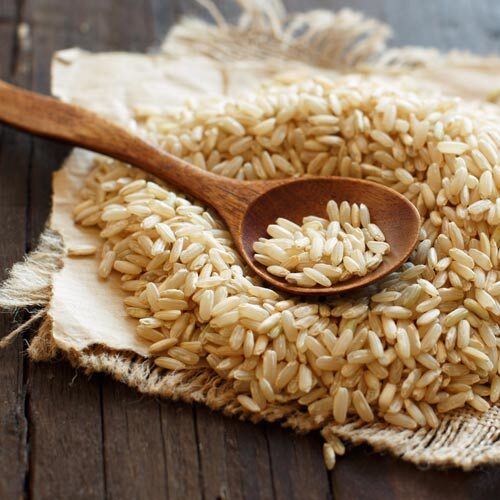Rice Bran – Spotlight on Whole Grain Cereals

Rice bran, indeed rice in general, has been finding its way into all kind of breakfast cereals as the focus moves away from wheat. Following on from our article on the benefits of eating whole grains for breakfast, we have been exploring some of these whole grains in more detail. This time it is the turn of rice.
Rice in your breakfast cereal
How breakfast cereal has changed. Variations of crisped rice, made with super crisp refined white rice and a ton of added sugar, have been a childhood (and late night snack time) favourite forever. Yet, generally speaking, rice does not appear in the ingredients lists of your average granola, muesli or porridge.
As one of the few true gluten-free grains, rice is having a bit of a moment. Versatile beyond its side dish status, and with all the benefits that whole grains have to offer, it is no surprise that brown rice for breakfast has become a thing.
Where might you find rice in your healthy cereal? Rice comes in a variety of forms suited to breakfast cereals, so look out for puffed rice, rice flakes, or rice bran.
Puffed rice, especially puffed brown rice, is not as crisp and shell like as commercial rice crispy type cereals. It has a texture and taste closer to that of popcorn. Rice naturally has a different texture to corn so it is steamed to add moisture before being air popped in the usual manner. Puffed rice can be found in many gourmet granola mixes, particularly in gluten-free granola, but is also great on its own.
Our gluten free maple nut crunch granola contains puffed rice.
Rice flakes are thinner than oats, with a texture unlike most flaked grains. Usually steamed and then flattened most rice flakes are not meant to be eaten raw, requiring cooking or soaking to soften them. This makes them ideal for porridge style blends.
Our fig and apricot bircher muesli contains brown rice flakes.
Is rice gluten free?
Yes, rice is gluten-free.
What does brown rice taste like?
Brown rice has more flavour than refined white rice and a slightly chewier texture. It tastes slightly sweet and nutty.
Does rice have protein?
Both brown and white rice have similar levels of protein. Rice does contain some protein, but it is not considered a high protein grain such as quinoa. Quinoa is also a complete protein, whilst rice protein lacks certain amino acids.
Is rice healthy?
Most of the nutrients in rice are contained within the bran and the germ. These parts are removed in the production of white rice, yet remain intact in brown rice.
Brown rice has twice as much fibre than white rice, and is abundant in antioxidant plant compounds known as flavonoids. Rice bran is particularly rich in lignans. These are another beneficial plant compound that it is suggested can help to lower the risk of many diseases, particularly female concerns such as osteoporosis, menopause and breast cancer.
The vitamin and mineral content of brown rice is higher than that of white rice, and it is particular rich in manganese, as well as a good source of magnesium, selenium, and B vitamins.
Which rice is the healthiest?
As we have seen, brown rice has far more nutrients than white rice, making it a healthier choice than white rice.
Yet, even white rice, although not as nutritious as brown rice, has its virtues. Not just gluten-free, it also has the benefit of being really easy on the digestion. Particularly good for those who may not even tolerate oats, white rice flakes make the ideal porridge and are a gentle way to start your day.
Next time you are buying breakfast cereal, look out on the label to see if it includes brown rice. And don’t forget that we have a range of healthy cereals at our online wholesale grocery store.
Find out more about what makes a healthy breakfast in our in-depth article.
This article was reproduced on this site with permission from operafoods.com.au the “Healthy Cereal manufacturers and distributors”.
See original article:- Rice Bran – Spotlight on Whole Grain Cereals

Comments are Closed